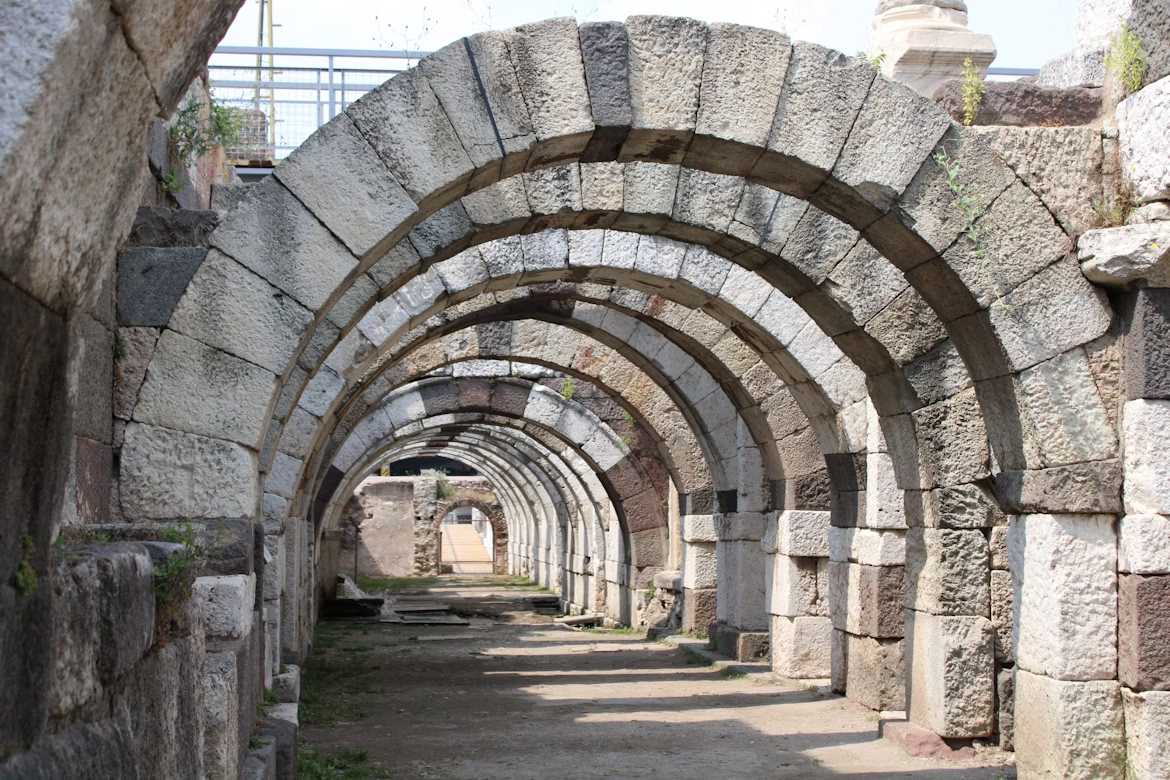by Arc. Biola Akinola, mnia
Today, we explore the concept of “Truth to Materials,” a fundamental principle in architecture that emphasizes the honest and authentic use of building materials. From its roots in the 19th century to its modern-day relevance, this philosophy has shaped how architects approach design by highlighting the natural qualities of materials rather than disguising or altering them. We’ll dive into the historical background, key proponents, and contemporary applications of this idea, examining how it continues to influence sustainable and innovative architectural practices today.
Introduction: Truth to Materials
The phrase “truth to materials” is central to the theory and practice of both arts and modern architecture. This concept refers to the honest use of materials, allowing their natural properties, textures, and qualities to be expressed without disguising or altering them unnecessarily. It refers to the honest and transparent use of materials, allowing their natural qualities, characteristics, and textures to be revealed without artificial enhancements or disguising. This philosophy is rooted in the belief that each material has its inherent value, which should be celebrated and expressed authentically, whether in artistic creations or architectural design. It stems from a broader design philosophy that emphasizes authenticity and integrity, opposing superficial decoration or the mimicking of other materials.
In Architecture, this principle, championed by architects like Frank Lloyd Wright and modernists such as Le Corbusier, has become a cornerstone of contemporary architectural practice. It has over time evolved and gained prominence in various creative fields, particularly during the modernist movement in the early 20th century. The subsequent sections explore the origins, development, and application of “truth to materials” in both arts and architecture, examining how this idea continues to influence design and creative practices today.
Origin and Historical Context
The concept of “truth to materials” began to take shape during the Industrial Revolution, which significantly altered the ways materials were used in both art and architecture. Before this period, there was often a tendency to use materials in a decorative or imitative way, disguising their true nature in favor of elaborate ornamentation or mimicry of more expensive or exotic substances. For example, wood might be painted to look like marble, or brick facades might be covered with stucco to resemble stone.
However, with the increased availability of new materials such as steel, iron, and glass, architects and artists began to explore the possibilities of using these substances more honestly. They sought to move away from decorative falseness and instead embraced the true nature of the materials they worked with. The Arts and Crafts movement, which emerged in the late 19th century, particularly emphasized craftsmanship and the intrinsic beauty of materials. This movement laid the groundwork for the modernist era, during which the concept of “truth to materials” became a key guiding principle in both art and architecture.
Key Principles of “Truth to Materials

- Honesty in Expression: The principle of “truth to materials” revolves around the idea that a material’s natural qualities should be expressed clearly in a design. For instance, wood should look like wood, not be painted or disguised as something else. The structural and aesthetic properties of materials are celebrated for what they are. In the context of architecture, this often means that the load-bearing properties, texture, and finish of materials are emphasized in their natural state. The goal is to let the material “speak for itself.”
- Rejection of Imitation: Another crucial aspect is the rejection of materials that imitate others, such as using concrete panels to mimic brick or applying stone veneers. The philosophy asserts that materials should not be disguised or artificially enhanced but should be valued for their inherent characteristics. The idea is to avoid the illusion of one material pretending to be another, which is seen as deceptive and disrespectful to the material’s true nature.
- Functional and Structural Integrity: “Truth to materials” also emphasizes that materials should be used in ways that highlight their structural capabilities. For example, the use of steel in modern architecture is often celebrated for its tensile strength, enabling long spans and open spaces, which would be impossible with weaker materials. Architects adhering to this principle design structures where the materials are used to their fullest functional potential, thus enhancing both aesthetic appeal and structural integrity.
Truth to Materials in Art
- Material Authenticity and Expression: In the realm of art, “truth to materials” refers to an artist’s commitment to working with materials in a way that honors their natural properties. Instead of transforming or altering the material beyond recognition, artists focus on emphasizing the textures, forms, and qualities that are intrinsic to the medium. This philosophy is especially prevalent in sculpture, where materials such as stone, wood, and metal are used in their raw forms. For example, sculptors working with marble often leave parts of the stone unpolished or unshaped, allowing the natural grain and texture to be visible. Similarly, wood sculptures may retain the irregularities and grain patterns of the wood, with the artist working around the natural characteristics of the material rather than forcing it into a specific, preconceived shape.
- Abstract Expressionism and Modern Art: The principle of “truth to materials” became a major influence in the modern art movements of the 20th century, particularly in abstract expressionism and minimalist art. Artists like Constantin Brâncuși and Henry Moore explored the raw qualities of materials, allowing the substance of the art to dictate the form. In Brâncuși’s work, for example, his marble, wood, and bronze sculptures often had a minimalistic, almost abstract quality, with the material itself being a central part of the piece’s identity. The artist’s aim was to reveal the material’s essence, with the form emerging naturally from the inherent qualities of the medium.
- Artistic Integrity: “Truth to materials” also reflects the integrity and honesty of the artist’s creative process. In this approach, artists resist the temptation to artificially manipulate materials to create a specific illusion or effect. Instead, they embrace the authenticity of their medium, valuing the process of creation as much as the final outcome.This idea extends to painting as well. For instance, many abstract artists in the mid-20th century experimented with the texture and viscosity of paint, allowing the medium to dictate the flow and shape of the artwork. Jackson Pollock’s “drip” paintings are an excellent example of this, where the fluidity of paint itself plays a central role in the composition.
Truth to Materials in Architecture

Honesty in Structure and Aesthetic:
In architecture, “truth to materials” is about using materials in ways that respect their structural and aesthetic capabilities. This philosophy rejects unnecessary ornamentation or disguising one material as another, instead emphasizing the inherent qualities of materials. Wood, for example, is celebrated for its warmth and grain, while concrete is valued for its strength and mass.
In this approach, architects choose materials based on their suitability for the task at hand, whether it be load-bearing, insulation, or aesthetic appeal. Each material is used to express its true nature, whether through visible structural elements or through unadorned finishes.

Frank Lloyd Wright and Organic Architecture:
Frank Lloyd Wright, a prominent advocate of “truth to materials,” integrated this philosophy into his designs under the broader umbrella of organic architecture. His belief was that a building should blend harmoniously with its environment and that materials should be used in a way that reflects their natural characteristics.
For example, in his famous work, Fallingwater (1939), Wright used local stone, concrete, and glass in their raw forms, creating a seamless connection between the built structure and the surrounding landscape. The materials were chosen not only for their functional purposes but also for their ability to create an aesthetic that reflected the natural world.
Modernist Architecture and Material Honesty:
The modernist movement of the early 20th century, led by architects such as Le Corbusier and Ludwig Mies van der Rohe, took the concept of “truth to materials” to new heights. These architects rejected ornamentation and historical references, focusing instead on clean lines, open spaces, and the honest use of materials such as steel, concrete, and glass.
Mies van der Rohe’s famous dictum “less is more” captures the essence of this philosophy. His buildings, like the Barcelona Pavilion (1929), showcase the natural beauty of materials through sleek, minimalistic designs. The use of glass, steel, and stone in their pure forms created spaces that felt open, light, and honest, with no attempt to hide or disguise the materials. For example, Le Corbusier’s “Villa Savoye” (1931) uses reinforced concrete in a way that makes the material’s structural capacity and flexibility evident. The columns, flat roofs, and open plans directly express the material’s capability for structural innovation without the need for decorative elements.
Brutalism and Exposed Concrete:
The Brutalist architecture movement took “truth to materials” even further by embracing the raw, unfinished qualities of concrete. Architects like Le Corbusier and Alison and Peter Smithson used exposed concrete, often without any decorative treatment, as the primary material in their designs. This unadorned approach was seen as a truthful expression of the building’s structure and form, avoiding the pretenses of ornamentation or façade.
Brutalist buildings, such as Le Corbusier’s Unité d’Habitation (1952), were often criticized for their stark, utilitarian appearance, but the raw materiality of concrete was celebrated for its honesty. Concrete, in this sense, was not hidden behind decorative facades but left in its natural state, showcasing its rough texture and structural strength.
The Intersection of Art and Architecture: Shared Ideals

- Craftsmanship and Authenticity: Both in art and architecture, “truth to materials” emphasizes craftsmanship and authenticity. In both fields, creators are encouraged to work with their materials in a way that respects their inherent qualities rather than forcing them into unnatural forms or using them to mimic other materials. Whether it is a sculptor carving stone or an architect designing a steel-framed building, the emphasis is on allowing the material to speak for itself.
- Minimalism and Simplicity: The shared aesthetic of minimalism is a hallmark of “truth to materials” in both art and architecture. By stripping away unnecessary elements and focusing on the essential qualities of the materials, both fields achieve a purity of form and function that aligns with the philosophy of honesty and integrity. This minimalist approach can be seen in everything from abstract art to modernist architecture, where materials are celebrated for their natural beauty and structural capabilities.
- Sustainability and Environmental Impact: In contemporary practice, the concept of “truth to materials” is increasingly tied to sustainability. In both art and architecture, there is a growing emphasis on using materials responsibly, with attention to their environmental impact and lifecycle. This approach aligns with the principles of “truth to materials” by valuing materials for their natural properties and choosing them for their sustainability, local availability, and durability.

Conclusion
“Truth to materials” is a timeless principle that continues to influence both art and architecture. From the honest expression of materials in modernist buildings to the raw textures in minimalist sculptures, this philosophy promotes authenticity, simplicity, and integrity. By allowing materials to be seen and appreciated in their natural state, artists and architects celebrate the beauty and strength of their chosen mediums. As both fields evolve, “truth to materials” remains a guiding principle, shaping practices that emphasize environmental sustainability and ethical use of resources while creating works that are both functional and aesthetically compelling.
The idea remains as relevant today as it was in the early modernist movements, offering a guiding principle for ethical, aesthetic, and functional design.
Image Gallery




© Carlos Delgado; CC-BY-SA






Discover more from dorted
Subscribe to get the latest posts sent to your email.









